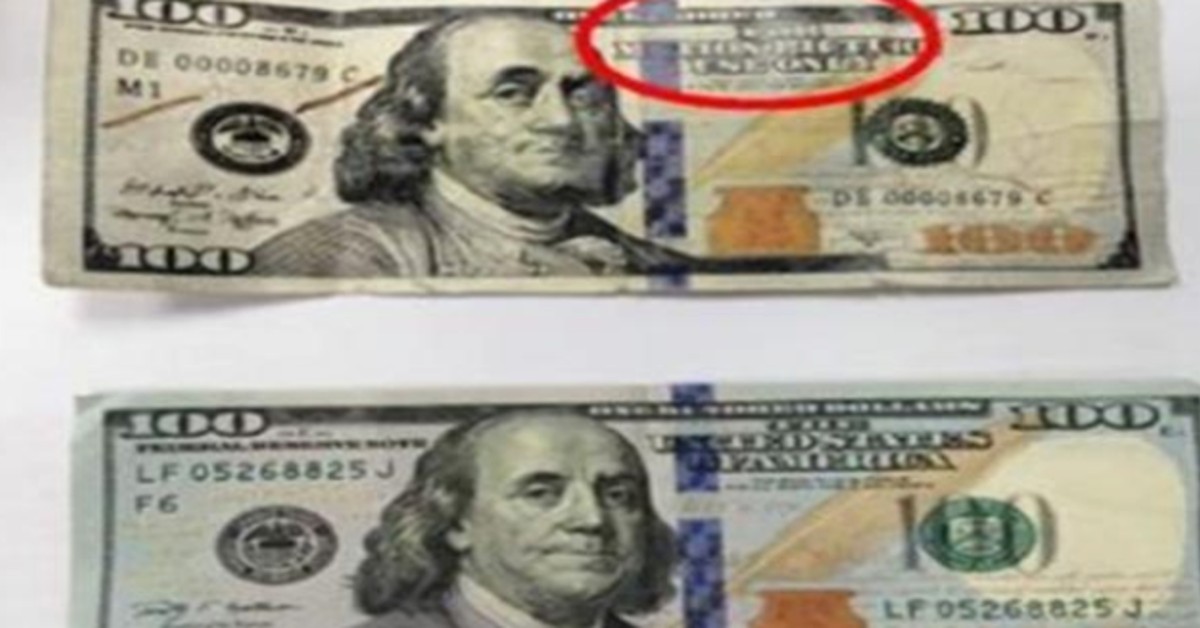How To Spot The Fake $100 Bills That Are Now Spreading Across The Country

How To Spot The Fake $100 Bills That Are Now Spreading Across The Country
For sure by now you have heard about counterfeit money that is being passed from stores to customers and then from one person to another without even knowing that the money is fake. Reports say that now, there are fake $100 bills that are being circulated across the country. And the last thing you want is to get your hands on these fake bills without noticing them.
Thankfully, there are a few ways that you can spot them.
You see, this money has been made for movies. It’s been passed around in at least one area of eastern Tennessee. Police departments have received reports from stores of customers that some are trying to use fake bills even though there are clear wordings on the front of the bill that states that the money is to be used in movies.
Special Agent Bruce Taylor of the Little Rock field office of the U.S. Secret Service says that you probably have handled some counterfeit bills, especially if you work as a bank teller, a convenience store clerk, or in some other jobs that handle a lot of cash.
He said, “A little less than 2 percent of the American money supply is counterfeit.”
He also said that the Arkansas office of the Secret Service receives 100 to 300 calls a month regarding the issue, from businesses or people who think that they have been given fake money. Taylor said that the bills in question turn out to be counterfeit about 80% of the time.
Taylor said the chances of receiving counterfeit money increases for those who are handling larger amounts of bills each day. He explains, “Domestic counterfeiters like to make $20 bills, and internationally, we see more $100 bills. The U.S. $100 bill is often used in international trade, and overseas, people don’t recognize the security features on our money as banks do here.”
The special agent further explained that even though counterfeiters have a much harder time duplicating American money they somehow have found ways to make it happen. He said that some criminals who print their own money use real U.S. bills to make the “bleached notes.”
He said, “They can take a $1 or $5 bill and scrub off the printing with corn starch or Easy Off oven cleaner, then reprint them as $20s or $100s. That is real U.S. currency paper, so the pen will say it is real. Looking at the bills under black lights is the best way.”
So how can you detect a real from a fake one?
The Treasury has embedded a clear polyester thread vertically in the bill’s paper. The placement is different for each denomination, and the thread glows a unique color under ultraviolet light or black light. The thread in a $5 bill will glow blue, a $20-bill thread glows green, and a $100 bill is seen in pink under UV light.
It means that if it doesn’t glow, then it’s fake.
It is very important that we are careful of the money that we receive these days. If it’s not from the bank, then it is crucial that you take the necessary steps to identify whether it’s real or not. This way, you don’t end up becoming a victim of these counterfeiters.

